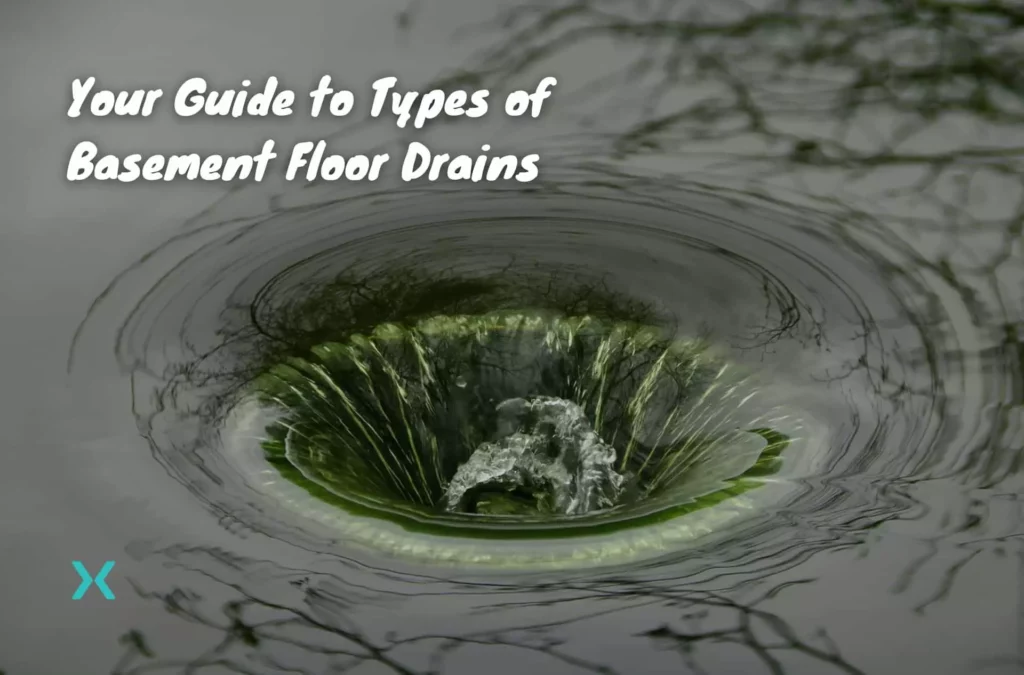Basements are a cornerstone of North American housing.
Since the rise of new foundation construction techniques in the 1950s, the basement has been characteristic of North American houses. This is especially notable in the Midwest and Western Canada, where homes are most likely to have a basement.
However, despite their many benefits, basements still face the same major problem they did in the 1950s: flooding. Due to their placement below the ground, your basement can be damaged by groundwater and rainwater, seeping into the walls and floor and wreaking havoc.
Fortunately, modern technology can be used to stop flooding. Through basement floor drains, homeowners can secure their basement’s safety and structural integrity.
This article will explain the many different types of basement floor drains and which one you should choose to keep your home healthy.
Table of Contents
⭐ How is a Basement Constructed?
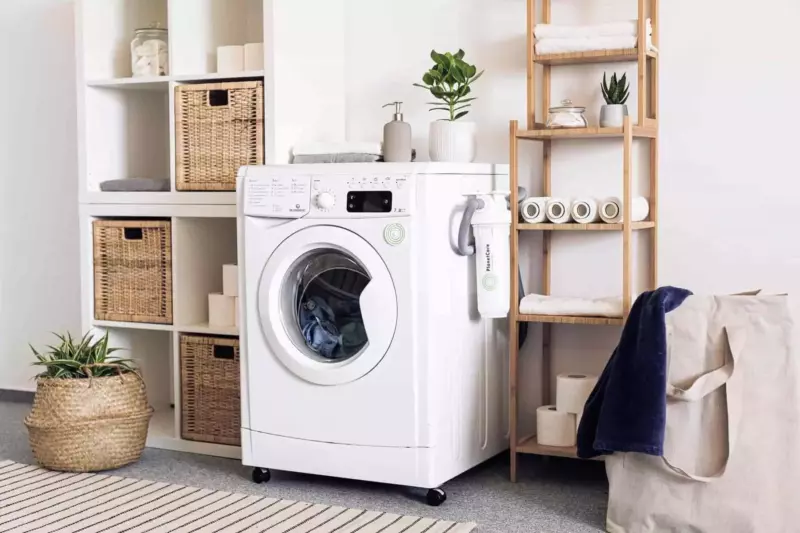
Before we explain the different floor drains, we must quickly understand how a basement is constructed.
A basement is usually built by digging out space in a vacant lot or underneath an existing house.
From there, concrete or cinder blocks are typically used to form the outer walls.
Now, this may all seem obvious, but understanding how your home’s basement has been built is essential for understanding drainage systems.
This is because there are two major approaches to building a drainage system in your house: the ground-level drainage system and the basement-level drainage system.
⭐ What is the Difference Between These Drainage Systems?
Put simply, a ground-level drainage system sits just under the ground, whereas a basement-level drainage system is installed underneath your basement floor.
These solutions may be more effective in preventing water from getting into your basement in the first place.
In contrast, basement floor solutions are more effective in stopping water from staying on your basement floor.
Notably, both solutions equally work to stop your basement from flooding.
Which one you choose is just a question of what kind of home you have.
⭐ Ground Level Solutions
If you have a finished basement or appliances in your basement that could be easily damaged by water, this kind of solution would likely be the best option to protect your house.
They can also be necessary to prevent water damage if you face heavy rain or a wet climate.
💧 French Drains
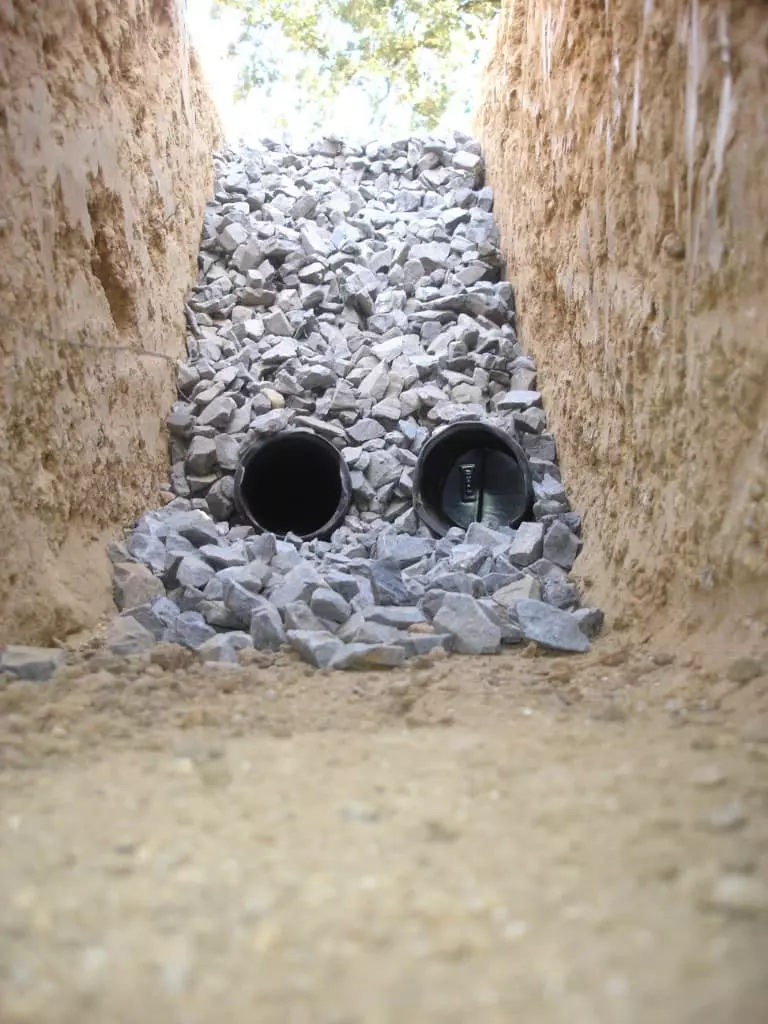
French drains are similar to curtain drains but sit at ground level instead of being deep underground.
As a result, they are neither basement drain nor surface level drain.
They use gravity to move water away from your home through a pipe or pipes connected away from your home to an outlet point.
As they prevent water from getting into your basement in the first place, they would be most beneficial for people with a finished basement floor and a house built on hilly terrain.
French drains are well-liked because they can be easily hidden.
As they sit under the soil, they don’t need to be visible, yet they will continue to work as long as they are correctly installed.
💧 Exterior Drain Tiles
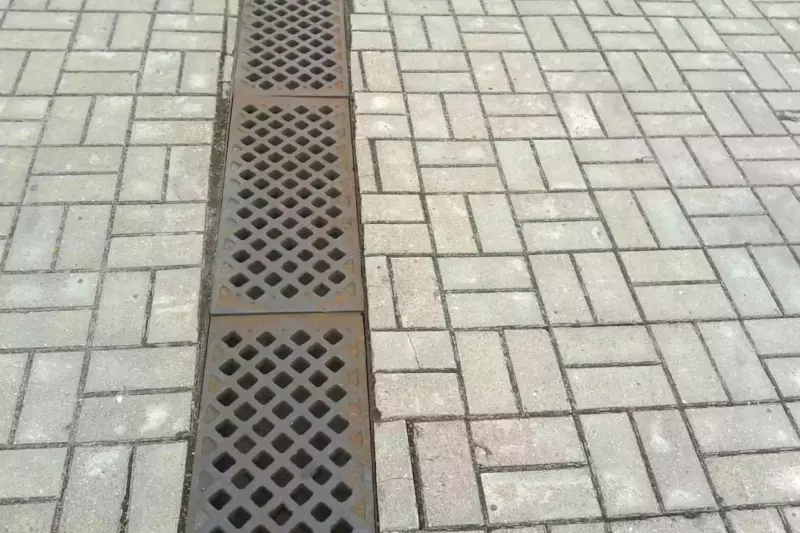
Another way to stop groundwater from entering your home is to use exterior drain tiles.
As the name suggests, this method involves installing drain tiles around the exterior perimeter of your house on the level of your ground floor.
This allows water to drain before it penetrates your basement walls.
Like curtain drains, these tiles use holes that take in excess water and direct it away from your home.
Specifically, groundwater is taken in by these tiles using gravity, leading to a drain system that can pump the water out to the nearest sewer.
Though these can be installed relatively discretely, they are more obvious than french drains.
You may want to review how the pipes are installed in the dirt with your installer.
⭐ Basement Level Solutions
Though solutions on the ground floor level are appropriate for some, homeowners may not need them if they do not have a finished basement floor (like if you use your basement as a laundry room or a utility area).
In this case, a basement-level solution may be more useful.
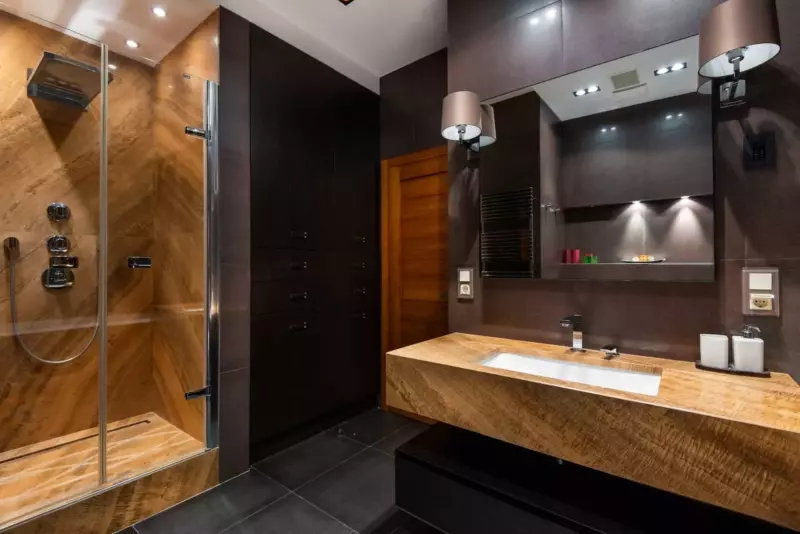
💧 Floor Drains
The floor drain might be the most recognizable basement floor drain available.
In fact, you probably already have a floor drain installed in your house: just think about how the water gets outs of your shower!
Basement drains are found on the floor of your house’s lowest point.
They are helpful for draining any excess moisture which could collect on your basement floor, be that from washing machines, water heaters (especially if your water heater leaks), or just heavy rain coming in from the outside.
Your floor drain can be handy if the excess moisture can drain adequately.
However, some problems can arise if the drain pipe is built to connect directly to the local sewage system.
If a problem arises on the main sewer line – like a clog or too much flow – the sewage could make its way up your pipe and start leaking through your floor drain!
As a result, you may want to link your floor drain up to a sump pump.
💧 Sump Pump
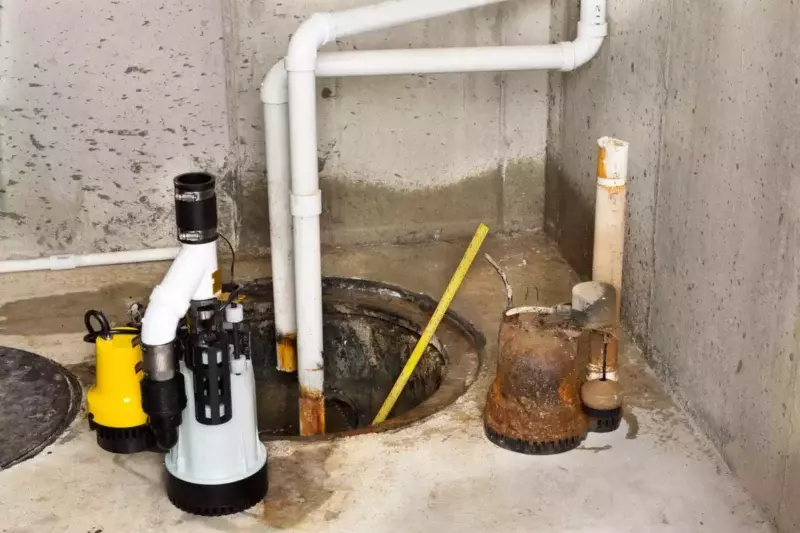
A sump pump is a handy tool for preventing water damage in your basement.
The central idea behind the sump pump is quite simple.
Water is taken in by a basement floor drain, just like an ordinary floor drain, but instead of going to the sewer, it goes to a small collection pit installed at the lowest point of your home.
Once in this collection pit, the sump pump can pump the unwanted water away from your home through discharge pipes.
This allows you to avoid the main drain line and thus prevent any clogged sewage from making its way in.
Hidden submersible sump pumps can be installed relatively discretely, and you may even want to install two sump pumps if you’re worried about the efficacy of your basement floor drain.
Be mindful, though, that they can require more maintenance, so you may need to remove them to repair them.
💧 Interior Drain Tiles
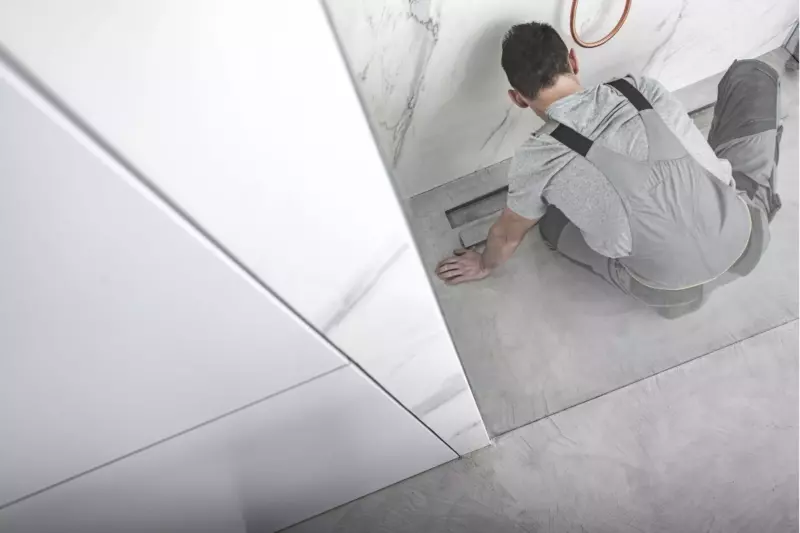
Just as you can install draining tiles outside your home, you can also connect drain tiles to your inside drain system.
These tiles operate similarly to exterior drain tiles, but you would install them on the interior perimeter of your basement floor.
The holes in the drain collect water which then travels away through pipes.
Where the pipe leads can be adjusted for your needs, you may want it to operate just like a basement floor drain, leading to a sewer or an outlet in the yard.
However, most professionals recommend you connect to a sump pump pit to avoid the problems associated with floor drains and the sewer.
⭐ Are There Any Drains That Work Differently For These Two Types?
If neither option seems attractive to you, you could try curtain drains.
💧 Curtain Drains
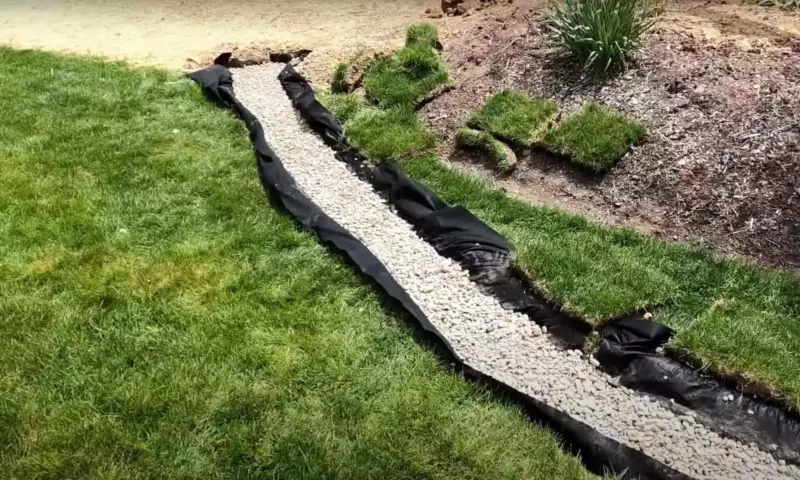
Curtain drains are similar to their French counterparts but sit close to the surface instead of directly under the ground.
They sit outside your basement just underneath the soil, forming a wrap-around drain line that collects groundwater before it can drain into your basement.
They work due to holes in the pipes under the gravel, which take up groundwater and drain them out to a collection pit or some other location where the water doesn’t threaten your property.
⭐ What Do I Need to Know About Maintenance?
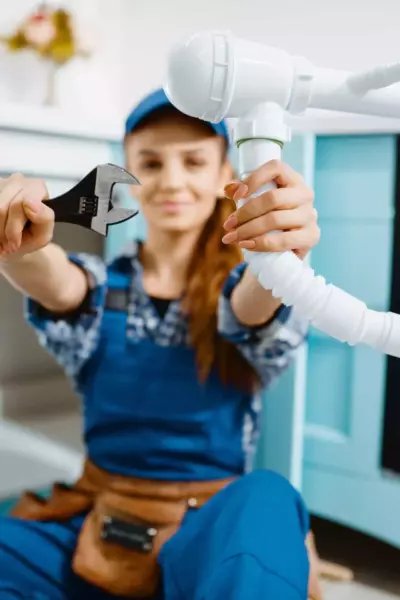
Like everything in life, all these solutions will work less efficiently over time.
So before you buy anything, it’s worth considering the potential upkeep these appliances will need.
Solutions like french or curtain drain and drain tiles require the least effort and will only need to be cleaned annually to remove built-up waste, as the pipes can catch debris and waste.
However, the biggest problem they could ever present is a broken pipe.
Your typical floor or basement drain may require more notice as it can trap more debris.
And finally, though one of the most effective tools for stopping water damage, sump pumps can require the most work due to their mechanical nature.
⭐ Are There Any Tools That Can Minimize Maintenance?
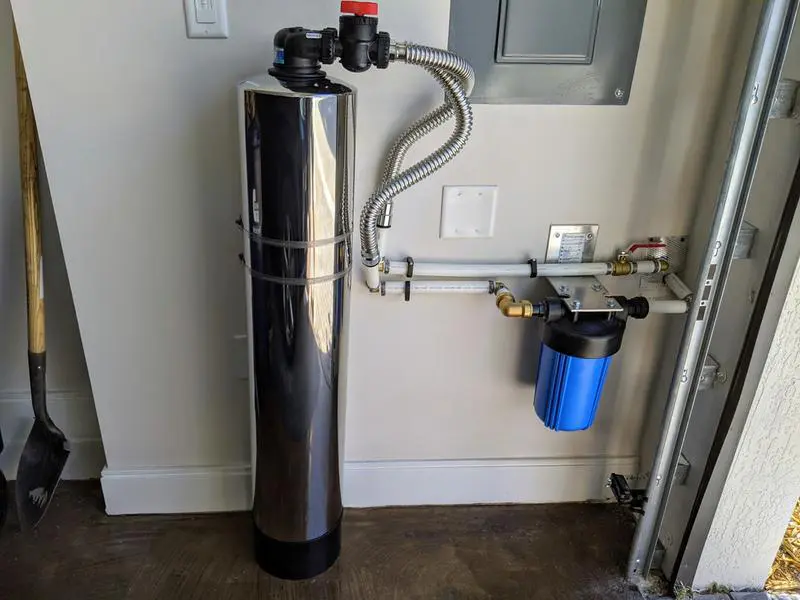
Maintenance can be minimized through the use of a water softener.
This device connected to your water supply line “softens” your water by exchanging its calcium and magnesium for sodium, which can reduce wear on your pipes.
This helps your other appliances work without damaging your drain.
⭐ Final Thoughts on Basement Floor Drains
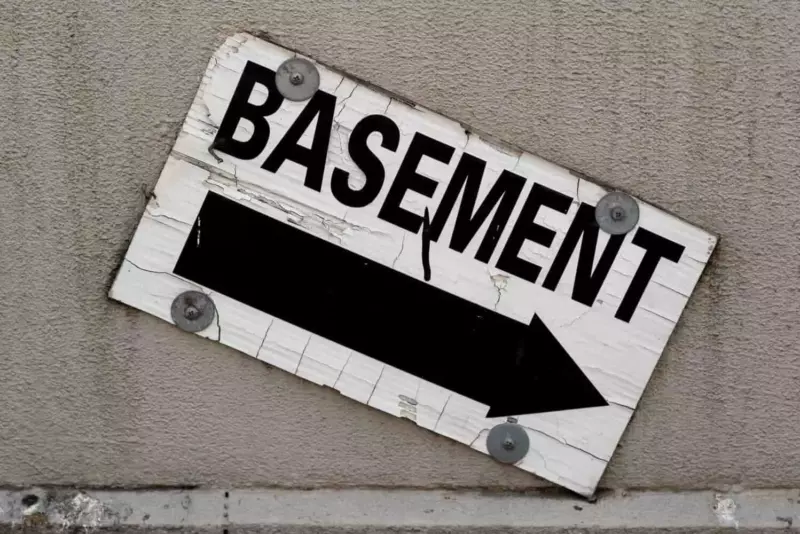
Floor drains are vital for preventing water damage in homes with basement levels.
However, the type of floor drain you should buy depends on whether you have a finished basement floor and what level of maintenance you’re willing to put in.
Want to learn more about your home’s plumbing system? Feel free to check out other plumbing articles.
If you live in the Central or North Okanagan region, Phyxter Home Services is the home services crew to call for all of your home’s plumbing services.
Related Reading: DIY Guide to 15 Common Plumbing Problems & Solutions

